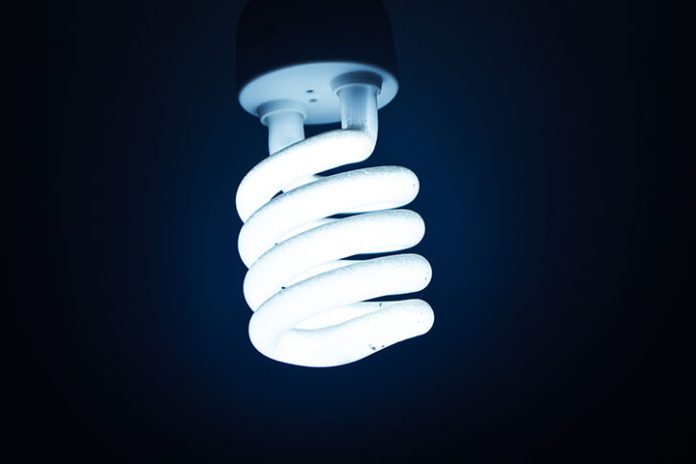The ideal commercial in-person workspace now includes amenities that improve employee comfort and productivity, such as automation and LED lighting. To meet the growing demand for commercial properties with advanced technologies, many facilities teams and property owners are racing to upgrade their buildings’ cabling infrastructure systems. These new technologies require massive amounts of data and cabling, and today’s raised access flooring systems provide the flexibility and adaptability property owners and facilities managers need to remain competitive.
Building Automation Systems
Many commercial workspaces utilize automation platforms to control various building services, including security, access, and HVAC systems. By monitoring a room or area with occupancy sensors, applications can adjust and optimize these systems for peak efficiency while reducing energy costs when unoccupied.
As more buildings connect to the IoT (Internet of Things), the collected data can be used locally or regionally to make informed infrastructure service decisions based on real-time data and consumer demand.
LED Lighting Systems
Unlike traditional fluorescent and incandescent bulbs that emit heat and light in all directions, LED (Light Emitting Diodes) lights are directional. This property allows them to use energy and light more efficiently for many applications. LEDs use heat sinks to absorb and disperse the heat, resulting in lower operating temperatures and extended life cycles. The most common LED light colors, red, yellow, and blue, are typically used on machine control panels. Creating the white light in commercial and residential applications requires combining different LED colors.
Energy costs remain a crucial concern for facilities managers to consider when evaluating new products or components. An LED light with 800 lumens of brightness costs $1.26 annually, compared to a similar halogen light which costs $6.02 annually.
The Importance of LED Lighting
Unlike fluorescent and incandescent bulbs, which require mercury and other chemicals, LED bulbs use phosphorus and current to create light, making them more environmentally friendly. LED lights have an average lifespan of 50-100K hours (14 years), reducing maintenance and replacement costs.
Eaton recently reported that LED lighting provides four substantial health benefits for employees:
LED lights help align circadian rhythms.
Today’s LED lights can mimic the stimulus created by natural light, which is essential to a healthy circadian rhythm. Blue light waves decrease melatonin levels to increase alertness, while warmer light waves, such as red and yellow, promote a regular sleep pattern. As a result, lighting designers can configure LED systems to emphasize blue wavelengths during business hours and then transition to warmer lighting for early morning and evening hours.
LED lights can decrease migraines and headaches.
Light sensitivity is a significant concern for those suffering from headaches or migraines. Employees can adjust LED workstation lighting to improve personal comfort and focus levels when paired with individual lighting controls.
LEDs increase productivity and learning.
When lighting systems are prioritized in an educational setting, learning performance increases due to the reduced number of overhead lighting fixtures (excessive brightness) and by eliminating the flicker of traditional lighting sources. Companies that utilize LED lighting report increased productivity levels and improved employee health.
LEDs reduce stress and anxiety.
School and work commitments can prevent people from spending time outdoors during the day. With this absence of sunlight, humans are likely to struggle with stress and anxiety, which can result in a SAD (Seasonal Affective Disorder) diagnosis for some employees. The LED light’s ability to mimic natural light and its impact on the circadian rhythm is credited with reduced stress and anxiety levels in many indoor environments.
Cabling Infrastructure Options
Unfortunately, many built environment locations utilize old-fashioned cabling systems where the cabling is hidden within walls or above ceiling systems. Technology upgrades for automation and LED lighting are expensive and time-consuming for most property owners and facilities managers.
As a result, raised access flooring is becoming more popular with designers, builders, and property owners again. The computer floor systems of the sixties hid the cooling ducts required for the old mainframe computers. Today’s systems create a 1.6”- 2.75” air gap between the slab and the raised flooring system, perfect for the cabling runs required by today’s digital technologies.
Note: While lighting systems (including LEDs) are not typically run through the raised access floor systems the devices that use and control an LED lighting system, such as sensors, computers, wireless access points for smartphones, and other peripherals, do.
Access flooring systems, such as the Gridd® Adaptive Cabling Distribution® System, allow owners and facility managers to change the technology infrastructure quickly and easily in virtually any built environment. Upgrades and reconfigurations that used to take weeks or months can now be completed within days or weeks, significantly reducing associated construction costs for facilities teams and property owners.
A flexible and adaptable cabling system not only addresses today’s cabling needs while reducing future construction costs, it can also prepare digitally driven workspaces for future bandwidth upgrades. Other technologies, such as AR (Augmented Reality), AI (Artificial Intelligence), and RPA (Robotic Process Automation), are being quickly adapted and employed by in-person companies, potentially pushing most built environment cabling systems to their limit.
Also Read: Exploring The Role Of Coworking Spaces

